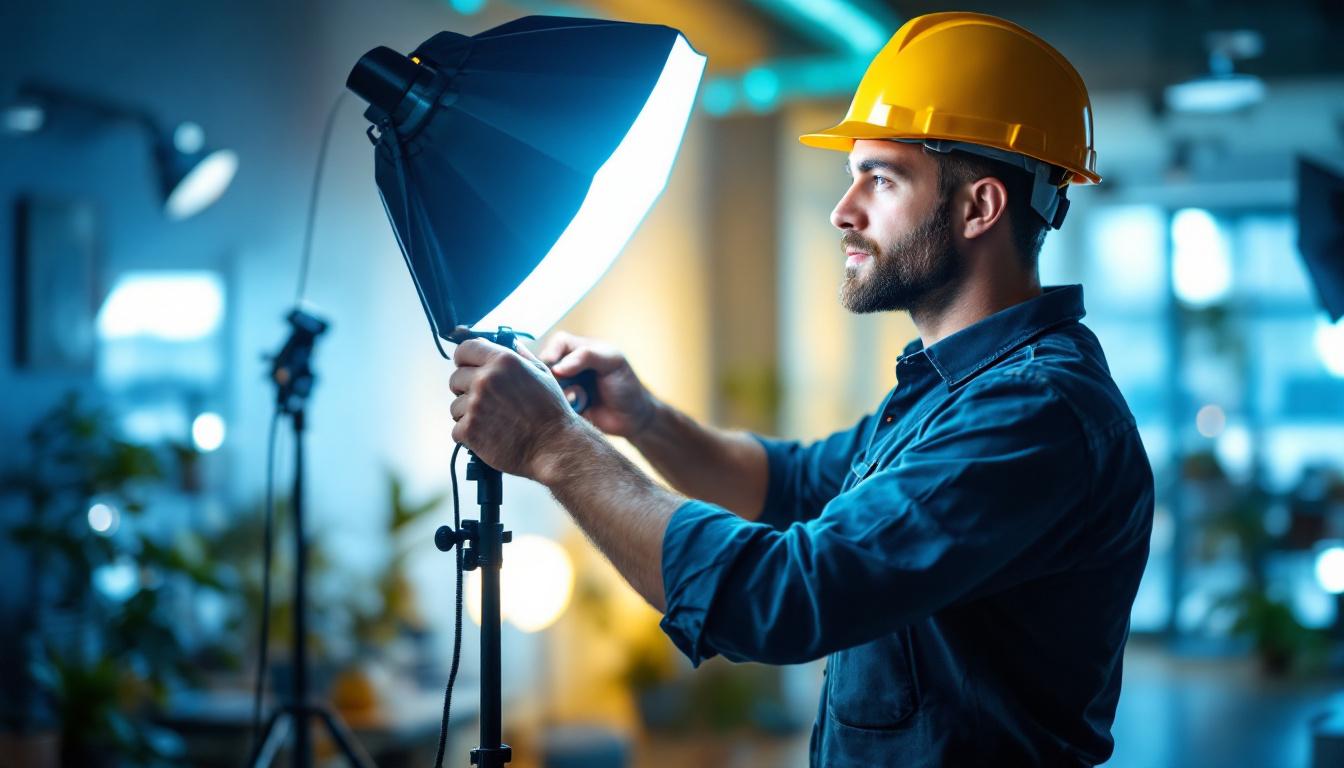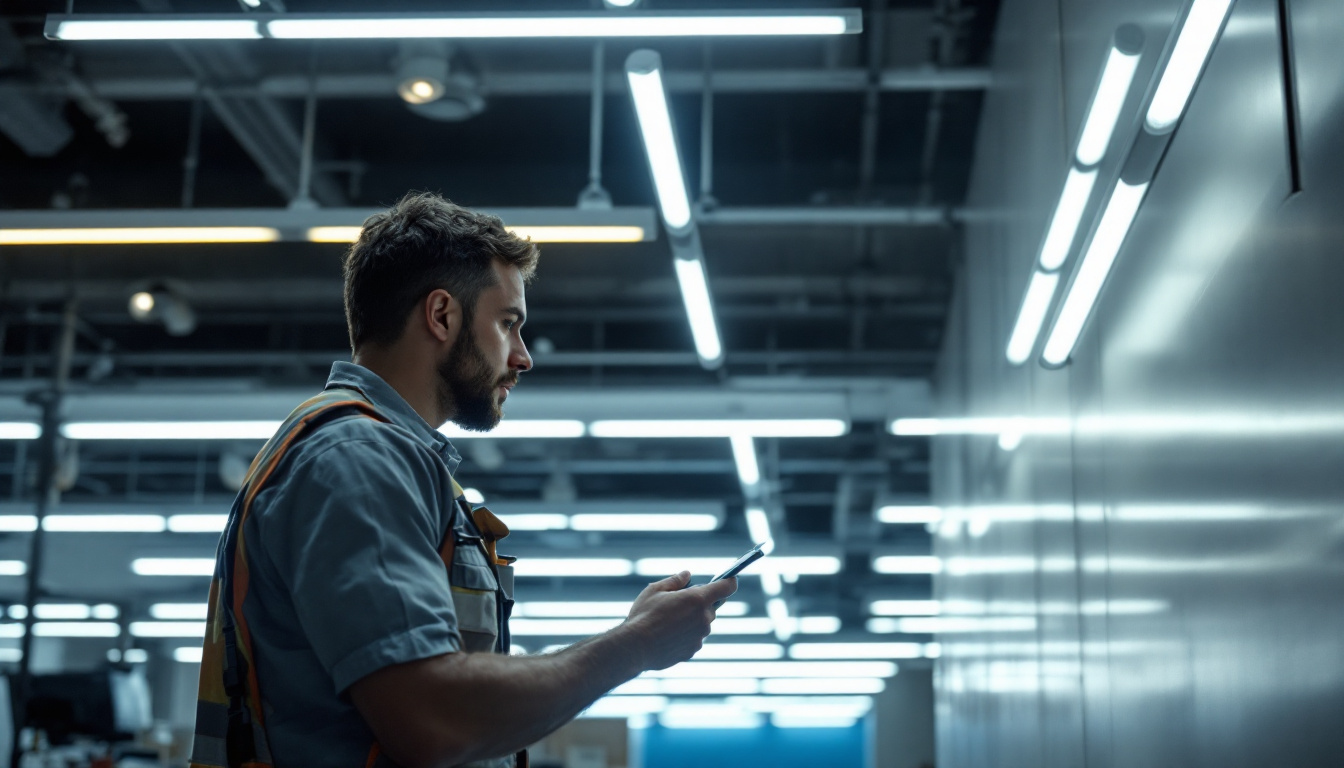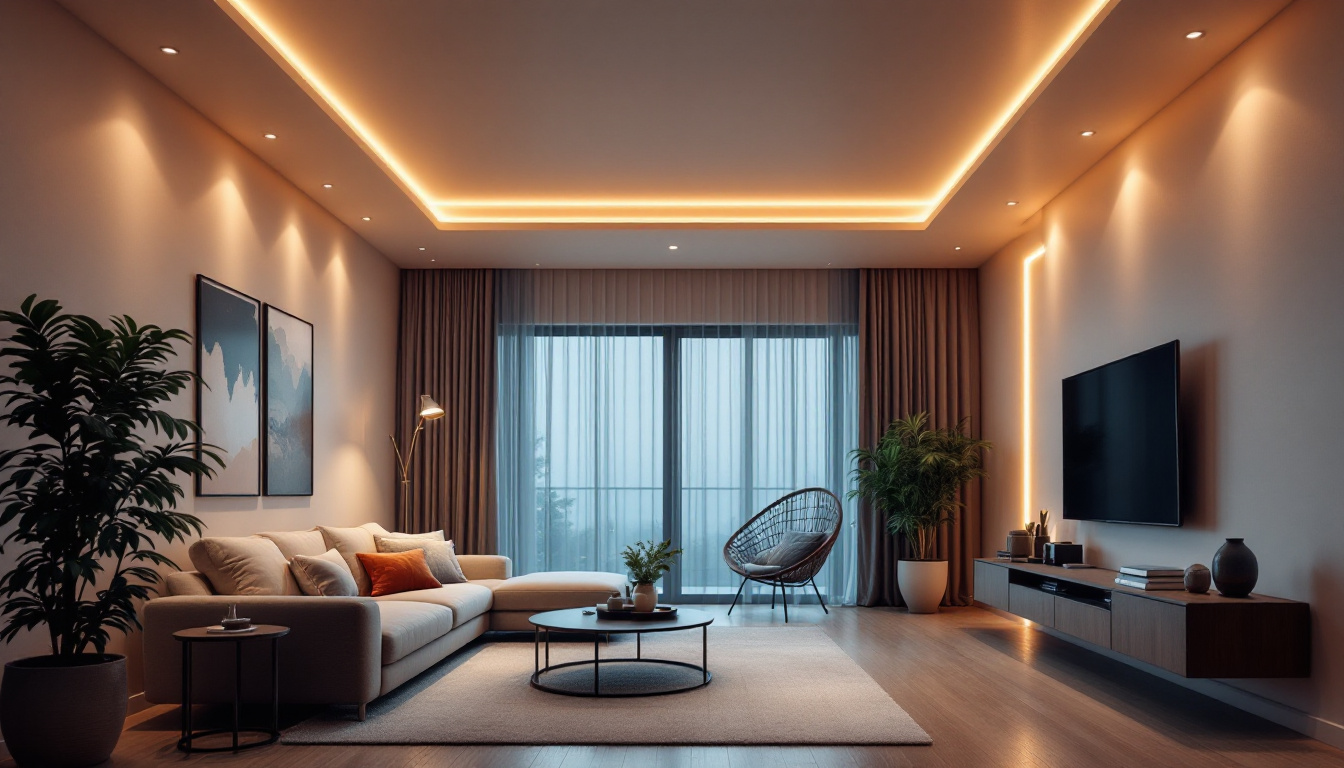
In the ever-evolving world of lighting design, studio LED lights have emerged as a game-changer for professionals in the field. As lighting contractors, understanding the nuances of these fixtures is essential for delivering high-quality results to clients. This article delves into the various aspects of studio LED lights, offering expert advice that can help contractors make informed decisions and enhance their projects.
LED, or Light Emitting Diode, technology has transformed the lighting industry by providing energy-efficient, long-lasting, and versatile lighting solutions. Unlike traditional incandescent or fluorescent lights, LEDs emit light through a semiconductor, which allows for greater control over color and intensity.
One of the most significant advantages of LED technology is its energy efficiency. LEDs consume significantly less power than their traditional counterparts, resulting in lower energy bills and a reduced carbon footprint. This efficiency is particularly beneficial in studio environments, where lights are often used for extended periods. Moreover, the longevity of LEDs—often lasting up to 25,000 hours or more—means less frequent replacements, which further reduces waste and maintenance costs. As studios increasingly adopt sustainable practices, the shift to LED lighting aligns perfectly with eco-friendly initiatives.
When selecting studio LED lights, understanding color temperature and Color Rendering Index (CRI) is crucial. Color temperature, measured in Kelvin (K), indicates the warmth or coolness of the light. For studio settings, a color temperature between 3200K and 5600K is typically preferred, as it closely mimics natural daylight. This range not only enhances the visual appeal of the subjects being filmed but also helps in achieving consistency across different lighting setups, which is essential for post-production work.
CRI is a measure of how accurately a light source displays colors in comparison to natural light. A CRI of 90 or above is ideal for studio work, ensuring that colors appear true and vibrant on camera. Lighting contractors should prioritize fixtures that offer high CRI ratings to achieve optimal results in their projects. Additionally, some advanced LED systems allow for tunable white light, enabling users to adjust both the color temperature and intensity dynamically, thus providing even more flexibility in creative lighting design.
Another critical factor to consider is dimmer compatibility. Many studios require adjustable lighting to create the perfect ambiance for various shoots. Not all LED lights are compatible with dimmers, so it’s essential to choose fixtures designed for dimming capabilities. This not only enhances versatility but also allows for precise control over lighting conditions. Furthermore, using dimmable LEDs can help in reducing flicker, which is particularly important for high-speed filming and can significantly affect the quality of the footage.
In addition to standard dimmers, some modern LED lights come with smart technology that allows for remote control and automation. This feature can be a game-changer in studio settings, as it enables lighting technicians to adjust the lighting from a distance, ensuring that they can make real-time changes without interrupting the flow of a shoot. The integration of smart lighting systems can also facilitate complex lighting setups, where multiple fixtures need to be synchronized for specific scenes, enhancing both efficiency and creativity in the production process.
Studio LED lights come in various forms, each serving distinct purposes. Understanding the different types can help lighting contractors select the right fixtures for their specific needs.
Panel lights are flat, thin fixtures that provide uniform lighting across a broad area. They are ideal for key lighting or fill lighting in studio settings. Their slim profile allows for easy mounting and positioning, making them a popular choice among lighting professionals.
These lights often come with adjustable color temperatures and dimming options, providing flexibility to adapt to different shooting conditions. Additionally, panel lights can be used in combination with softboxes or diffusers to create softer light, which is especially beneficial for portrait photography and video production.
Fresnel lights are characterized by their adjustable beam angles and focusable lenses. They are commonly used for key lighting, backlighting, and creating dramatic effects. The ability to control the beam spread makes Fresnel lights a favorite among cinematographers and lighting designers.
When selecting Fresnel LED lights, contractors should consider the wattage and beam angle options available. A wider beam angle can provide softer lighting, while a narrower beam can create more focused, intense light, allowing for greater creative control.
Spotlights are another essential tool in the lighting contractor’s arsenal. These fixtures produce a concentrated beam of light, making them perfect for highlighting specific subjects or areas within a scene. They are often used in theatrical productions, music videos, and other performance settings.
When choosing spotlights, it’s important to consider features such as adjustable focus, color filters, and mounting options. Many modern LED spotlights also offer RGB capabilities, allowing for dynamic color changes and effects that can elevate a production’s visual appeal.
Proper installation of studio LED lights is crucial for achieving the desired lighting effects. Lighting contractors must be aware of several factors to ensure optimal performance and safety.
LED lights require a compatible power supply to function correctly. Contractors should verify that the power supply meets the voltage and wattage requirements of the fixtures being installed. Additionally, proper wiring is essential to prevent overheating and electrical hazards.
It is advisable to use high-quality cables and connectors to ensure a reliable connection. When installing multiple fixtures, contractors should also consider the total load on the circuit to avoid overloading and potential power failures.
Mounting options play a significant role in the effectiveness of studio lighting. Contractors should assess the studio layout and determine the best positions for fixtures to achieve the desired lighting effects. Common mounting options include ceiling mounts, wall mounts, and stands.
When using stands, it’s essential to ensure stability, especially when working with heavier fixtures. Utilizing sandbags or weights can help prevent accidents and maintain safety in the studio environment.
Proper light placement and angling are critical for achieving the desired effects. Lighting contractors should consider the direction and intensity of light, as well as how it interacts with the subjects being illuminated. Key, fill, and backlighting should be balanced to create a harmonious look.
Experimentation with different angles and distances can yield unique results. It’s often beneficial to conduct test shots before finalizing the lighting setup to ensure that the desired effects are achieved.
To maximize the lifespan and performance of studio LED lights, regular maintenance is essential. Lighting contractors should establish a maintenance routine that includes cleaning, inspection, and timely repairs.
Dust and debris can accumulate on LED fixtures, affecting their performance and color accuracy. Contractors should use a soft, lint-free cloth to gently wipe down the surfaces of the lights. For more thorough cleaning, a mild detergent solution can be used, but care should be taken to avoid moisture entering the fixtures.
Additionally, it’s important to check for any signs of wear or damage, such as frayed cables or loose connections. Addressing these issues promptly can prevent more significant problems down the line.
Many modern LED fixtures come equipped with smart technology that allows for remote control and programming. Keeping the firmware and software updated ensures that the fixtures operate at peak performance and benefit from the latest features and improvements.
Lighting contractors should regularly check the manufacturer’s website for updates and follow the recommended procedures for installation. This proactive approach can enhance the functionality and versatility of the lighting setup.
The lighting industry is constantly evolving, with new trends emerging that can influence how studio LED lights are utilized. Staying informed about these trends can help lighting contractors remain competitive and innovative.
Smart lighting solutions are gaining popularity in studio environments. These systems allow for remote control and automation of lighting setups, enabling contractors to adjust settings on-the-fly or pre-program specific lighting cues for different scenes.
Integration with other smart devices, such as cameras and sound systems, can create a seamless workflow that enhances productivity and creativity. As technology continues to advance, embracing smart lighting solutions can provide a significant advantage in the competitive landscape.
As awareness of environmental issues grows, many lighting contractors are adopting sustainable practices in their projects. This includes using energy-efficient LED fixtures, implementing recycling programs for old lighting equipment, and sourcing materials from environmentally responsible manufacturers.
Clients are increasingly seeking out contractors who prioritize sustainability, making it a valuable selling point. By adopting green practices, contractors can not only reduce their environmental impact but also appeal to a broader client base.
Customization is becoming a key trend in studio lighting. Clients often seek unique lighting setups tailored to their specific needs, whether for film, photography, or live performances. Lighting contractors who can offer bespoke solutions will stand out in the market.
By understanding the specific requirements of each project, contractors can design lighting systems that enhance the overall aesthetic and functionality. This level of personalization can lead to increased client satisfaction and repeat business.
Studio LED lights offer an array of benefits for lighting contractors, from energy efficiency to versatility. By understanding the technology, types of fixtures, installation considerations, and maintenance practices, contractors can elevate their projects and deliver exceptional results to clients.
Staying informed about industry trends and embracing innovative solutions will further enhance a contractor’s ability to meet the evolving demands of the market. With the right knowledge and tools, lighting contractors can harness the power of studio LED lights to create stunning visual experiences that leave a lasting impact.
Ready to take your lighting projects to the next level? At LumenWholesale, we provide lighting contractors with the superior studio LED lights you need to create those stunning visual experiences. Our spec-grade lighting products are not only top-quality but also offered at unbeatable wholesale prices, ensuring you get the best value for your investment. Say goodbye to local distributor markups and hello to a vast selection of reliable, high-performance lighting that meets the highest industry standards. Plus, with free shipping on bulk orders, you can stock up on premium lighting without worrying about hidden fees or compromises. Don’t miss out on the perfect blend of quality, affordability, and convenience. Visit LumenWholesale today and discover Wholesale Lighting at the Best Value for all your contracting needs.

Discover the top 8 LED tubes that are lighting up the industry, and learn what crucial details contractors often miss.

Discover the transformative impact of Light Kit LEDs in modern lighting installations.

Discover the essential resources lighting contractors rely on to master recessed LED lighting.

Discover the top lighting stores in Milwaukee, WI, and explore best practices for lighting contractors.